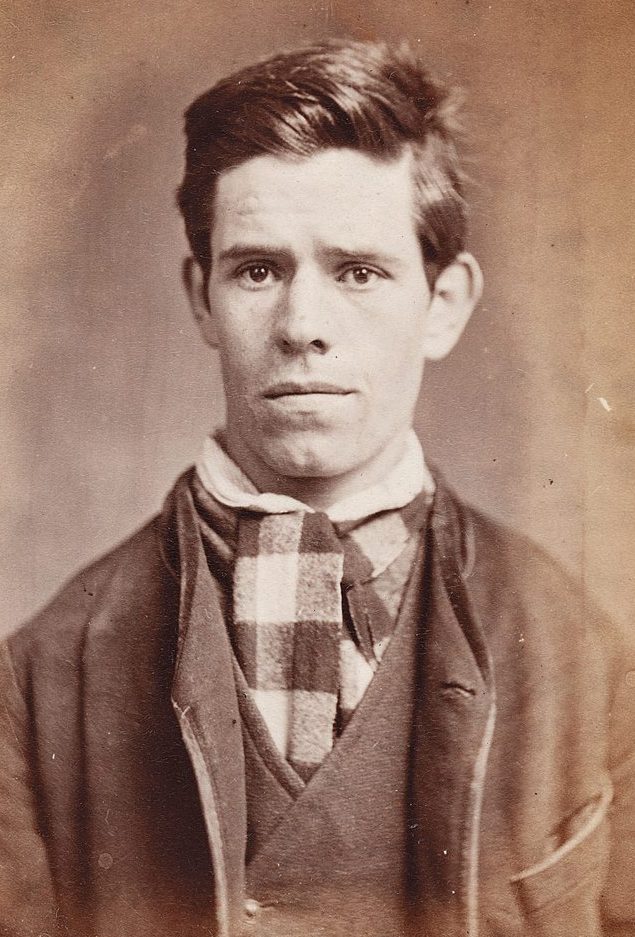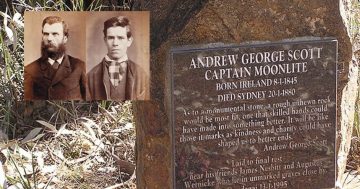
Bushranger Andrew Scott, aka Captain Moonlite. Photo: Supplied.
Bushranger Andrew Scott, aka Captain Moonlite, is best remembered in the Riverina for his final, dramatic shootout at Wantabadgery Station, near Wagga.
But new research is looking past the legend to examine the religious beliefs of this complex 19th-century outlaw.
Dr Matthew Grubits was intrigued by Scott’s early days in Australia, where he served as an Anglican minister in Victoria before he embarked on a life of crime.
“As somebody with a religious background, that was of interest to me, but as I continued to read through Scott’s biography, I found that that wasn’t focused on or discussed,” he said.
“It was dismissed as just a phase in Scott’s life that didn’t have an impact on his actions after he gave up the position of lay reader.”

Dr Matthew Grubits has explored the religious life of Captain Moonlite. Photo: Supplied.
Based in Tasmania, Dr Grubits completed his PhD research through Charles Sturt’s School of Theology in Canberra and explored whether the bushranger’s religious beliefs could provide an insight into his life.
Scott, born in Northern Ireland, had a minister father who migrated with his family to New Zealand, where he served in the army during the Maori Wars.
Wounded in both legs and given a limp he would carry for life, Scott travelled to Melbourne, where he joined the church and served at Bacchus Marsh and the gold-mining town of Mt Egerton.
It was here that his life took a dark turn after he was accused of robbing a nearby bank.
“He took his obligations as a lay reader seriously and met the expectations of his religious community,” Dr Grubits said.
“He gave up the position of lay reader on the Sunday following the Egerton Bank robbery and is not known to have been part of a church community again.”

Captain Moonlite in 1879. Photo: Victoria Police Museum.
A string of dodgy enterprises followed and the articulate adventurer was in and out of jail before embarking on a series of lecture tours advocating prison reform and ultimately becoming an outlaw.
“It’s difficult for us today to understand the level of his infamy during his own lifetime,” said Dr Grubits, explaining how he was able to gain a glimpse into the mind of a man who was hanged more than 140 years ago.
“When Scott was on a train being transported to prison, hundreds and sometimes thousands of people flocked to the train station to try and catch a glimpse of him.
“When he was in court, the courtrooms were always crowded to overflowing, because he was such a figure of public interest.”
A decade of breathless newspaper coverage formed the backbone of Dr Grubits’ research along with prison reports, interviews and Scott’s own letters.
“When I have a look through his condemned-cell writings, I see lots of references to what I consider a genuine faith,” Dr Grubits said.
“He talks about going to meet God, he anticipates heaven, he talks about being judged by God and he considers God to be more merciful than men.
“So that suggests that religion is still an aspect of his worldview and while his relationship to religion changed as he went on this criminal journey, his faith can’t be said to have disappeared completely.”

Andrew Scott is today romantically linked to fellow bushranger James Nesbitt. Photo: Victoria Police Museum.
In recent years, much has been made of Scott’s affection for his companion James Nesbitt, who died in his arms during the Wantabadgery shootout.
While Dr Grubits doesn’t dispute the popular claim of a romantic relationship between the pair, he warns that modern readers should interpret Scott’s words within the conventions of the time.
“Since the discovery of Scott’s condemned-cell writings in the 1980s, people have assumed that they indicate that they had been lovers,” he said.
“Studies of masculinity and sexuality in the past are quite complex, and language that sounds romantic today might not have been intended to be romantic in the past.
“If he did have romantic affection for Nesbitt, or even if their relationship was sexual, he may not have conceived of it in the same way we conceive similar relationships today.”
When examined through a religious lens, Dr Grubits explained, much of Scott’s writings about Nesbitt were aimed at redeeming him from a public legacy as a criminal and a sinner.
“He’s Scott’s dearest friend and he is grieving for him and he’s actually trying to portray Nesbitt as embodying Christian virtues despite his shameful death in conflict with the police,” he said.
“And more than that, he uses all this religious imagery, saying that Nesbitt was like the heart of (King) David to me in that he soothed the evil spirit that came upon me like David did to King Saul in the Bible.”
For Dr Grubits, Andrew Scott is a complex and contradictory character who provides a unique insight into a worldview from another time.
“First of all, he was seen as a bushranger, then he was seen as a gay bushranger and to then talk about him as religious upsets the picture because it seems to be in complete contrast to those other two elements,” he said.
“Could a manly bushranger have really cared about God? And perhaps people assume that homosexuality and Christianity have an uneasy relationship.
“But all of these things are contained in Scott.”








